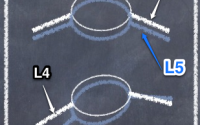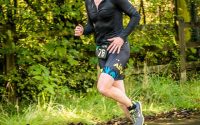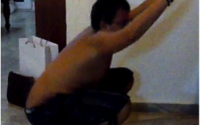The Bullies and the Bullied – Part 2
Last time we started talking about the bullies and the bullied. In part 1 I talked about the bullies of the body and why they are so powerful. Today we will look at the ‘bullied’ areas of the body.
As I see it the bullies are the:
- Hips
- Feet
- Thoracic Spine
and the bullied are the:
- Knees
- Lumbar Spine
- Cervical Spine
- Shoulder
I don’t think either list is exhaustive and others can be argued, for example you can say the eyes are also a bully and almost any area of the body can be bullied, but to keep the post under a million words we’ll start with these
The Bullied
The bullied tend to be areas of the body that hold less power, whether that is because they have less muscular power or less joint stability from the bones or ligaments. The bullied areas of the body are at the mercy of the more powerful joints that surround them. This whole concept came from my explanations to my patients, particularly with my knee pain patients…so lets start with the knee.
The Knee
Particularly with chronic/over-use type knee problems it is unlikely I will spend much time treating the knee itself. If the patient needs it, I do have strategies for symptom relief around the knee. However, if you want to solve these types of knee injuries you need to get to the root cause…the bullies. In the main you are looking at the hip and the foot directly bullying the knee. However, don’t forget that these can be influenced from elsewhere, so it doesn’t stop at the next joint.
For today we will just think about the same side hip and foot. The knee is a slave to these far more powerful joints. From the top down if motion is driven through the hip and the hip is compensating for a lack of motion in for example the transverse plane, the transverse plane force will be passed down the chain to the knee. The knee has a very limited ability to dissipate these extra forces passed down the chain. If the foot doesn’t help out the knee, it will be the knee that has to absorb the force. If the force is great enough or repetitive enough an injury is likely.
As if that was bad enough for the knee, a similar scenario can occur from the bottom up. From the bottom up the transverse plane motion of the lower limb is dictated by the amount of sub talar joint motion. If there is over pronation there will be a large internal rotation force passed up to the knee, if the hip is limited and unable to accommodate this motion it will torque the knee, which is forced to try and meet the demands of both bullies.
On the other hand, if the foot is unable to go through pronation the knee may be forced to flex without its desired amount of internal rotation or abduction. Again over time these adverse forces can result in an over-use injury.
In the sagittal plane, if there is a lack of ankle dorsiflexion the knee is forced to try and help achieve a successful back foot in gait, often forced to hyperextend. Over time the forces endured during the hyper extension can really irritate the the tissues around the knee.
These are just a few examples, but you can see where it is going…there’s plenty to look at for a ‘simple’ knee injury.
Lumbar Spine
The Lumbar spine gets so much attention…back pain is so prevalent in our society. The bullies here can be any of the 3 or any combination of the 3. The first assessment will often see me look at the 2 of them…as that’s often all I have time for. I choose the 2 depending on the individual, but most likely it will be the hips and thoracic spine.
Again, it’s all about forces being passed on. Force can neither be created nor destroyed, so if one body segment isn’t able to go through the a particular range and absorb its fair share of force…it will be passed along the chain or maybe absorbed/dissipated in another plane, either disrupt the normal flow of movement.
Lets stick with the transverse plane for this example and say that the right hip has limited internal rotation. During gait, as the cycle progresses the right hip will run out of range and a potential compensation will be that the pelvis has to rotate excessively to the right. This means the lumbar spine will feel greater amounts of force in left lumbar rotation. If this is repetitive over a long period this could easily cause pain and discomfort.
From the top down, a lack of motion in the thoracic spine will simply increase the motion asked for from the lumbar spine. Think of a golf swing where the thoracic has limited rotation…the force and motion will end up coming from lower down the chain and again it is the lumbar spine that gets bullied!!
Cervical Spine
Similar to the lumbar spine, the cervical spine will be forced into greater ranges if there is a limitation in the thoracic. I find this is particularly common when the upper thoracic is very stiff and the causes the lower cervical spine to become limited. Over time the cervical range often comes from the upper cervical and over time results in pain in the cervical musculature, shoulders and cervicogenic headaches.
The cervical spine is only physically fixed at one end, so you would think it is difficult to bully it because it can always escape distally. However, the eyes fix the distal end, as we use them so much and we are governed by many reflexes, which effectively ‘fix’ the cervical spine. This means that the cervical can be bullied more easily.
Shoulder
I’m sure you are getting to see the pattern of things In the case of the shoulder I see the thoracic as a bully and our reliance on the hand for achieving many varying goals as the bullies.
To keep it simple, if we have a goal that required the right shoulder to go through flexion. For this goal to be achieved successfully the motion will be shared between the glenohumeral joint, scap thoracic joint and thoracic spine (and beyond, but we will stop there for this example). If the bully that is the thoracic spine is limited in extension it will limit the ability of the scap thoracic joint to go through the required amount of depression/posterior tilt. If the motion isn’t coming from the more proximal joints the goal of flexion will have to ask more of the glenohumeral joint. The GH joint has very little power to stop this happening and over time a GH joint injury is likely.
Summary
I’ve only used a few examples of each, but it is easy to see how the bullies dominate the bullied areas of the body. This means that the areas of symptoms are often coming from a bullied area of the body, but in order to solve the problem long term it will be the bullies that have to be addressed.
It is also key to address the influence of one bully on another. For example, it might look like a lack of hip internal rotation is bullying the lumbar spine. But if the foot is not everting on that side the hip may not be able to internally rotate…so you would have to address the foot first
It can get complicated, but if you keep hunting down the root cause you will solve problems long term and have a lot of fun doing it


